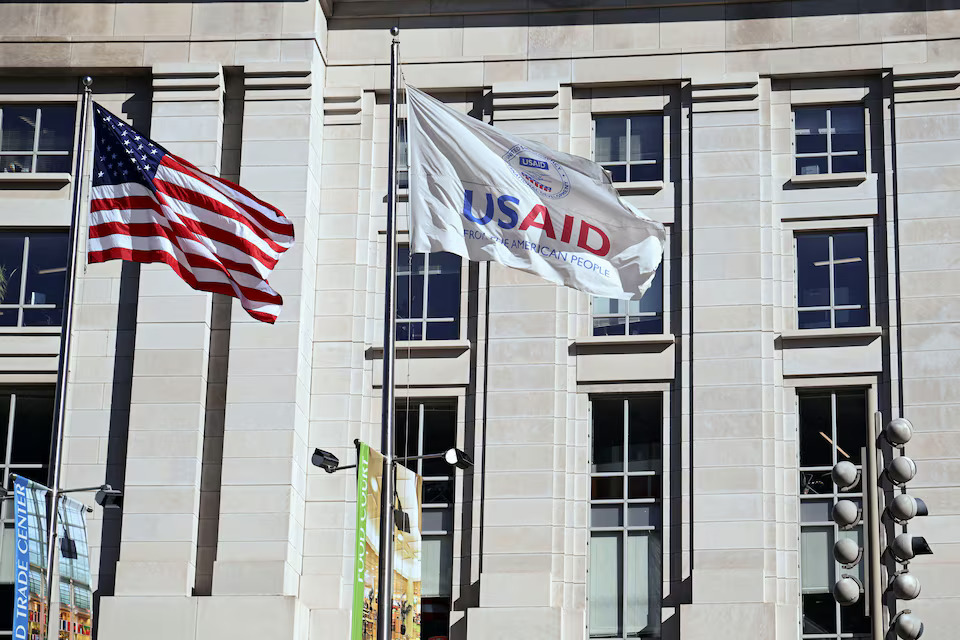The United States President, Donald Trump, is fulfilling his pre-election pledge to withdraw from the World Health Organization (WHO). In one of many orders issued following his inauguration, he signed an executive order on Monday night to officially begin the U.S. withdrawal from the global health body.
Trump’s dissatisfaction with the WHO dates back to the height of the COVID-19 pandemic. He has repeatedly criticised the organisation for its slow response to the crisis and for being “owned and controlled by China.”
“World Health ripped us off,” Trump remarked during an extended, informal discussion with reporters as he signed the executive actions.
It will take a year for Trump’s pledge to be officially realised, in line with the time frame the U.S. set when it joined the WHO in 1948.
[ MORE: Trump Sworn in as 47th US President for Historic Second Term ]
During his first term, Trump halted U.S. funding to the WHO and initiated the withdrawal process. However, before the one-year period had elapsed, President Joe Biden took office and immediately reversed Trump’s decision. The new executive order also instructs the newly confirmed Secretary of State Marco Rubio to halt negotiations on a pandemic agreement that WHO member countries have been working on for years, with a deadline for conclusion set for May.
Furthermore, the executive order stipulates that actions to implement amendments to the International Health Regulations — a set of technical guidelines governing responses to outbreaks, among other issues — which were agreed upon by countries last year, “will have no binding force on the United States.”
The U.S. withdrawal is expected to result in the loss of hundreds of millions of dollars for the WHO’s core budget. Trump’s order points out that the WHO continues to demand “unfairly onerous payments” from the U.S., disproportionate to the contributions of other countries.
As an example, the order highlights China, which, despite having a population vastly larger than the U.S., contributes nearly 90% less to the WHO. Membership fees to the WHO are largely based on a country’s gross domestic product.
The consequences of Monday’s announcement for WHO are significant. They’d lose arguably their most important member — and their biggest donor by far. The U.S. gave $1.284 billion to WHO during 2022 and 2023 – hundreds of millions of dollars more than Germany, the second-place donor. This financial loss could hamper the WHO’s ability to respond swiftly and effectively to infectious disease outbreaks and other global health emergencies. In exchange, the U.S. may lose access to the global network that determines the annual flu vaccine composition.
[ MORE: Read the Full Inaugural Speech of U.S. 47th President Donald Trump ]
The withdrawal could also undermine the ability of the Centers for Disease Control and Prevention (CDC) to monitor and contain health threats abroad, according to global health experts. Dr. Tom Frieden, who led the CDC for eight years under the Obama administration, noted, “There are places where we just can’t send CDC epidemiologists, they wouldn’t be safe.”
American drugmakers could also be affected, as they may lose the WHO’s support in distributing their products worldwide. The WHO system that endorses drugs, vaccines, and medical devices for global use, which many developing countries rely on, could be impaired by the loss of U.S. funding.
This marks Trump’s second attempt to withdraw the U.S. from the WHO. In July 2020, he sent a letter to WHO Director-General Tedros Adhanom Ghebreyesus notifying him of the U.S. intention to withdraw within a year, accusing the WHO of aiding China in misleading the world about the spread of COVID-19. However, following his defeat in the 2020 election, President Biden reversed Trump’s decision upon taking office in January 2021.
This time, Trump will still be in office when the withdrawal takes effect. However, unlike in 2020, the WHO may be able to offset some of the financial losses resulting from the U.S. withdrawal. Last year, the organisation launched an investment round seeking $7 billion to mobilise predictable and flexible resources from a broader base of donors for the WHO’s core work between 2025 and 2028. As of late 2024, the WHO reported receiving commitments for at least half of this target.



